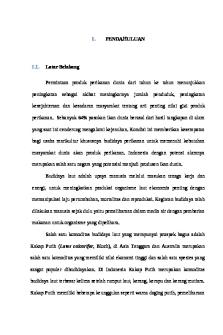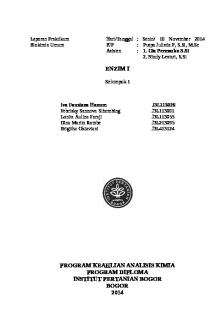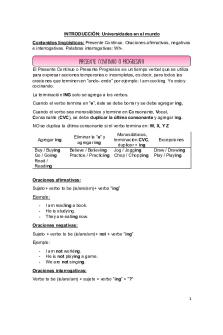Electroencephalography I PDF

| Title | Electroencephalography I |
|---|---|
| Author | Sarah ElizaBeth |
| Course | Human Anatomy Lab |
| Institution | University of North Carolina at Greensboro |
| Pages | 2 |
| File Size | 34.8 KB |
| File Type | |
| Total Downloads | 14 |
| Total Views | 122 |
Summary
lab assignment...
Description
Lab Homework 1) Compare and contrast the waveforms (appearance of wave activity) of synchrony and alpha block. During synchrony, the alpha waves should be apparent. We would expect synchrony to occur during a relatively restful period of decreased concentration. Alpha waves would decrease when the person opens their eyes, especially if they are concentrating. This is called an alpha block. It is possible that merely opening the eyes was not enough mental stimulation to dramatically reduce alpha and increase beta waves. 2) Does synchronization of the alpha rhythm occur when the eyes are open or closed? Synchronization of the alpha rhythm occurs with eyes open.
3) Does the beta rhythm become more pronounced when the eyes are open or closed? Theoretically, the beta waves should become more pronounced when the eyes are open. However, they become even more pronounced when the mind is in concentration. 4) The amplitudes (height) of the waveforms are indicative of how much alpha activity is occurring in the subject. However, the amplitude values for beta do not reflect the amount of mental activity occurring with the eyes open. Please explain. Beta waves are characterized by lower amplitudes primarily because greater electrical activity of the cortex causes the average signal to be flatter. In other words, the increased positive and negative activity cancel each other on the average signal during increased mental functioning. 5) Examine the delta and theta rhythm. Is there an increase in delta and theta activity when the eyes are open? Try to explain your observation. Theta waves should decrease as a result of decreased relaxation during the eyes open condition. We would not expect much change in delta waves, which are usually most observable during deep sleep. 6) Briefly, what does the EEG signal represent? The EEG represents an average of the thousands to millions of action potentials occurring in the cortex below the electrode....
Similar Free PDFs

Electroencephalography I
- 2 Pages

I. Architecture, ecriture...I
- 32 Pages

I. PENDAHULUAN I.1
- 35 Pages

PEO I - PEO I
- 24 Pages

Pronomi I - Apuntes Pronombres I
- 25 Pages

Tytan i jego stopy I
- 3 Pages

ENZIM I
- 13 Pages

Modul I
- 7 Pages

Wirtschaftsprivatrecht I
- 18 Pages

Teilnehmerhandbuch I
- 21 Pages

Fundicion I
- 14 Pages

I dittonghi
- 1 Pages

SELAAWI I
- 17 Pages

Ingles I
- 46 Pages
Popular Institutions
- Tinajero National High School - Annex
- Politeknik Caltex Riau
- Yokohama City University
- SGT University
- University of Al-Qadisiyah
- Divine Word College of Vigan
- Techniek College Rotterdam
- Universidade de Santiago
- Universiti Teknologi MARA Cawangan Johor Kampus Pasir Gudang
- Poltekkes Kemenkes Yogyakarta
- Baguio City National High School
- Colegio san marcos
- preparatoria uno
- Centro de Bachillerato Tecnológico Industrial y de Servicios No. 107
- Dalian Maritime University
- Quang Trung Secondary School
- Colegio Tecnológico en Informática
- Corporación Regional de Educación Superior
- Grupo CEDVA
- Dar Al Uloom University
- Centro de Estudios Preuniversitarios de la Universidad Nacional de Ingeniería
- 上智大学
- Aakash International School, Nuna Majara
- San Felipe Neri Catholic School
- Kang Chiao International School - New Taipei City
- Misamis Occidental National High School
- Institución Educativa Escuela Normal Juan Ladrilleros
- Kolehiyo ng Pantukan
- Batanes State College
- Instituto Continental
- Sekolah Menengah Kejuruan Kesehatan Kaltara (Tarakan)
- Colegio de La Inmaculada Concepcion - Cebu

